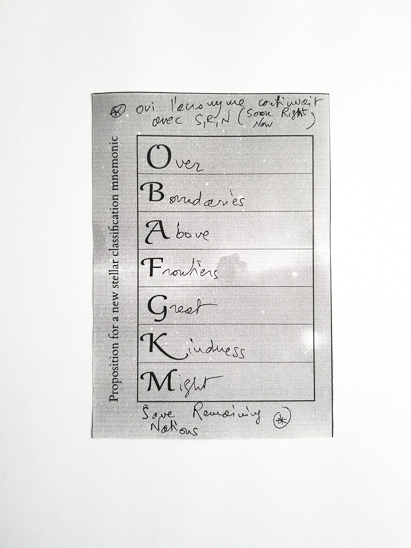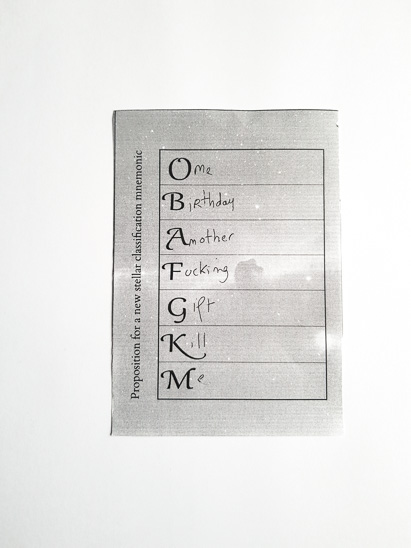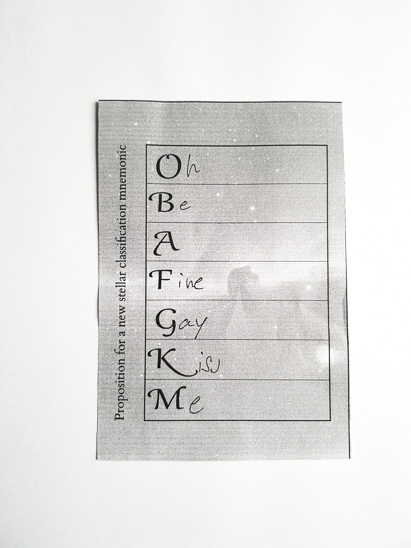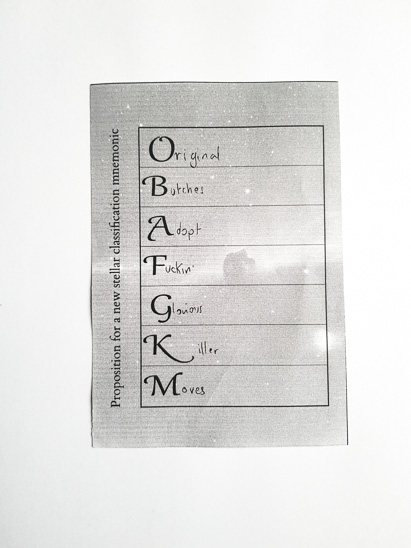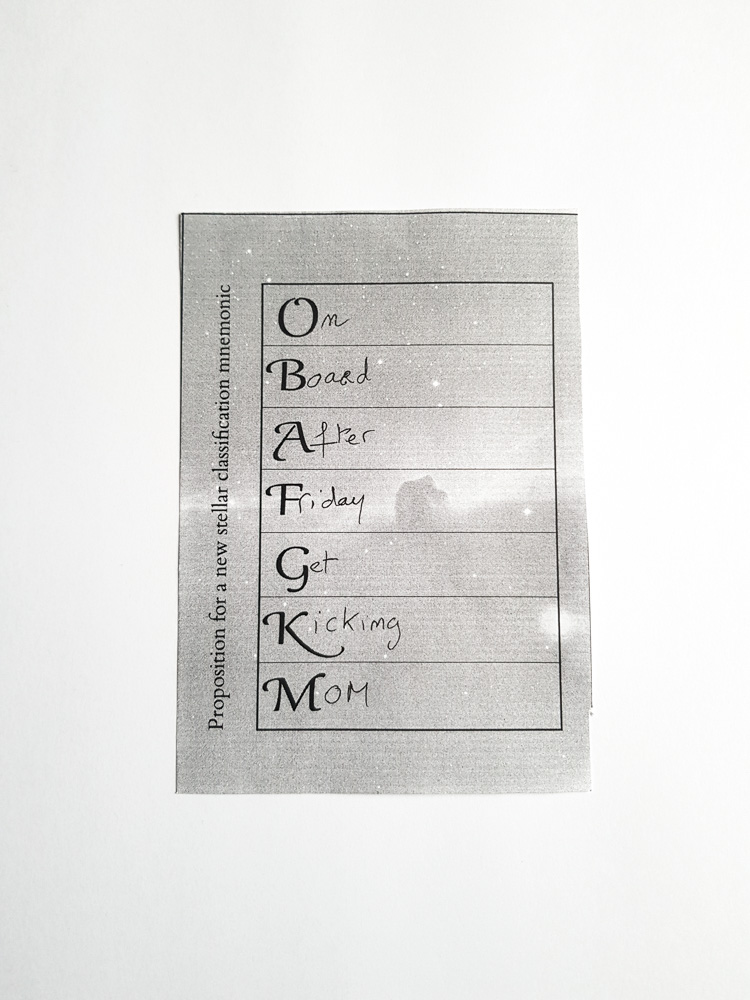Oh Be A Fine Girl, Kiss Me
Participatory performance, for the event 'Genre, Unique' at the Centre Culturel Tchèque de Paris, November 16th 2017
Harvard College Observatory, 1881. In a room, there were a dozen of computers, calculating and cataloguing the immense data of the stars.
Charles Pickering was the head of the Observatory, and was growing tired of the incompetence of his male assistants. The story goes that he once declared even his maid could do a better job than them. Of course his maid was no ordinary maid, Williamina Fleming was well educated and a brilliant mind. Pickering put her in charge of recruiting other women as human computers, a move considered at the time radical, but also practical, as they were paid only a fraction of a man's salary. The group of women became known under the unflattering term 'Pickering's Harem'. Their work being viewed as just crude calculation by their peers. But their contribution to the field of astronomy was immense.
Williamina Fleming helped develop a common designation system, and in the span of nine years catalogued more than 10.000 stars. She is most well known for having discovered the Horsehead Nebula. Her credits were largely erased when the works were published.
Antonia Maury spent much of her time on theoretical work, finding new distinctions in the spectral classification used at the time. Her discoveries were frowned upon at Harvard, as they were viewed as a loss of time for a 'computer'. She struggled all her life to be fully credited for her own findings.
Henrietta Swan Leavitt discovered the relationship between luminosity and the periodicity of variable stars. Her work went mostly ignored at first but was the basis for the calculations of distances between Earth and distant galaxies, giving humanity an idea of the size of our universe. When the importance of her work was finally recognized, the academy of science tried nominating her for a Nobel Prize, only to discover she had died three years earlier.
Annie Jump Cannon catalogued in her lifetime over 400.000 stars, more than any other astronomer. She also refined the stellar classification in a system still used today; the sequence O, B, A, F, G, K and M.
The system was taught to all students, and a male astronomer came up with a mnemonic device to remember it Oh Be A Fine Girl, Kiss Me. The acronym is still used today. While woman have contributed to the very building blocks of our understanding of the universe, we use outdated learning devices, where the woman is not actor but subject. Some in the field have tried finding a new mnemonic device. Some even replace 'Girl' with 'Guy'. But it never really catches on.
We can act on our understanding of the universe. We can find new ways to remember how to classify stars. We can reclaim the legacy of woman in science, We can teach their contributions to human knowledge without perpetuating patronizing patriarchal jokes. Take a piece of paper and participate.
O B A F G K M

